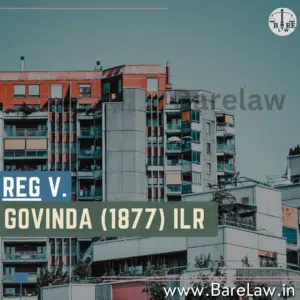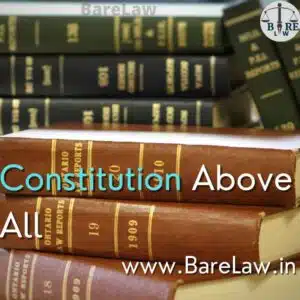Simplifying Your Life & Law | Legal Drafting services
Case Name- Sakshi vs Union of India
Citations– AIR 2004 SC 3566, 2004 (2) ALD Cri 504
Background
Sakshi, was an NGO that tried to focus on violence against women filed a petition in the apex court to declare that rape according to Section 375 of the Indian Penal Code, includes any kind of penetrations by force. Sakshi claimed that the current law limits rape to vaginal penetration only which violated the provisions of the Indian Constitution as well as India’s International commitments under various organs.
Issue and resolution
The court refused to include any other kinds of penetrations except forcible vaginal penetration in the ambit of Section 375.
Observation by the court
The decision made by the court was based on the legal principle of stare genesis i.e., the court is required to follow previous decisions when no special circumstances arise. Altering the current definition of rape under section 375 of the Indian Penal Code would lead to ambiguity and confusion and will be against the interest of people.
The contention by the petitioner
The learned counsel for the petitioner, Ms. Meenakshi Arora, urged that the Indian Penal Code should be interpreted according to the present needs and the interpretation should be purposive. She submitted that section 375 of the Indian Penal Code should be interpreted regarding the alarming proportion of child abuse in today’s world. She submitted that section 375 I.P.C should not be understood in the traditional sense but should include all types of penetrations. She emphasizes the fact that there is no proper definition of the words ‘sexual intercourse’ in the Penal Code and hence the court can give it a wider meaning so that the offenders of child abuse may come within the ambit of Section 376 of the Indian Penal Code (punishment for rape). In this regard, she also referred to the Convention of the United Nations in 1979, on the Elimination of All Forms of Discrimination Against Women and also Convention On the Rights of the Child on 20th February 1989, adopted by the General Assembly of the United Nations. A special reference was made to Articles 17 and 19 also.
Article 17
The important function performed by the mass media is duly recognized by the State parties and they make sure that the child should have access to information and materials from all the diverse sources whether national or international, especially those aimed at the promotion of physical and moral well being. For this, state parties shall encourage the development of guidelines to protect the child from material that might be injurious for his or her development, keeping in mind the provisions included in articles 13 and 18.
Article 19
1. All the appropriate legislative, administrative, educational, and social measures should be taken by the state parties to protect a child from any form of injury or harm, mental and physical violence, negligent treatment, exploitation, maltreatment, or sexual abuse while in the care of legal guardian’s or appearance or any other person who is taking care of the child.
2. Such measures for the protection of children should include protective procedures to establish programs to provide the necessary support to the child and for his or her guardians, as well as to protect him from other forms of prevention, investigating, reporting, referral, and follow up of instances of the maltreatment of children and also for judicial involvement.
The contention by the respondent
The learned counsel for the respondents, R.N. Tiwari, has submitted that to frame guidelines to enforce fundamental rights, International Treaties ratified by India can be taken into account but only in the absence of municipal laws. This was held in Vishaka vs State of Rajasthan 1997. It was also submitted by him that when there are already existing laws, they cannot be held ultra vires after the subsequent ratification of international treaties. In such instances, the state legislators have the power to modify the laws according to the treaties. It was held that such matters came under the realm of State policy and could not be enforced in court.
Conclusion
The petition is disposed of by the court with the following directions-
In addition to subsection 2 of section 327 of the criminal procedure Code, an inquiry or trial of offenses shall also be made under sections 354 and 377 of the Indian penal code.
While holding a trial for child abuse or rape, some arrangements shall be made where the witnesses are victims do not see the body of the accused because the site of the accused may induce fear in the mind of the victim.
The questions which are to be put in cross-examination should be submitted to the presiding officer of the court in writing, who may put them in a clear language that is not embarrassing.
The victims of such cases shall be allowed with breaks when required while testimony.
You may also like to read:
-
29 Jul 2021 Case BriefsCase Brief on Virsa Singh v. The State of Punjab (1958) AIR 465
-
18 Aug 2021 Case BriefsI.R. Coelho v State of Tamil Nadu
-
25 Aug 2021 Case BriefsCase brief of K. M. Nanavati v. the State of Maharashtra
-
04 Sep 2021 Case BriefsCase Brief: Reg v. Govinda (1877) ILR Bom 342
-
10 Jul 2021 Know Your LawCulpable Homicide and Murder
-
12 Sep 2021 Know Your LawConstitution above all



